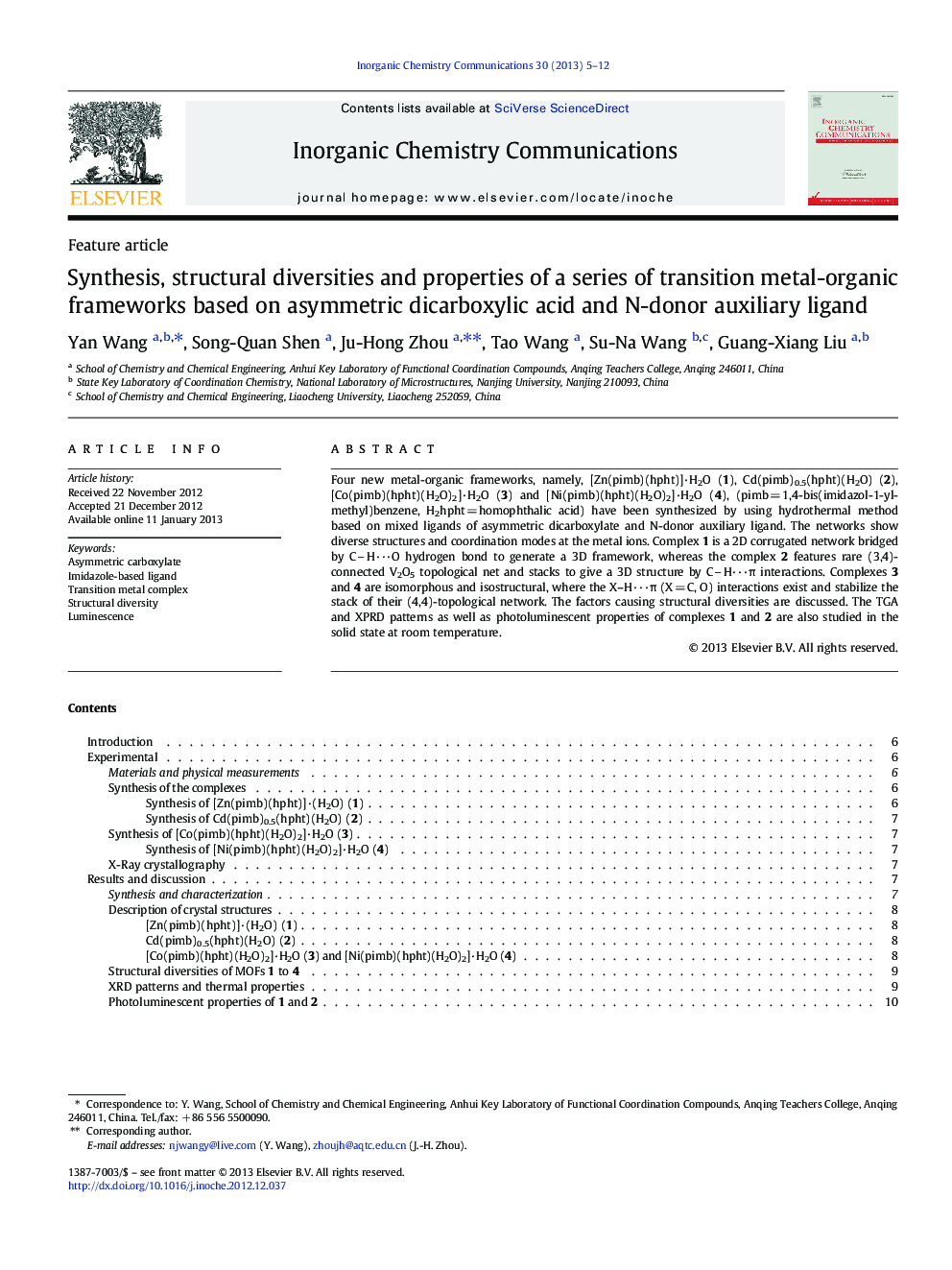| Article ID | Journal | Published Year | Pages | File Type |
|---|---|---|---|---|
| 1302010 | Inorganic Chemistry Communications | 2013 | 8 Pages |
Four new metal-organic frameworks, namely, [Zn(pimb)(hpht)]·H2O (1), Cd(pimb)0.5(hpht)(H2O) (2), [Co(pimb)(hpht)(H2O)2]·H2O (3) and [Ni(pimb)(hpht)(H2O)2]·H2O (4), (pimb = 1,4-bis(imidazol-1-yl-methyl)benzene, H2hpht = homophthalic acid) have been synthesized by using hydrothermal method based on mixed ligands of asymmetric dicarboxylate and N-donor auxiliary ligand. The networks show diverse structures and coordination modes at the metal ions. Complex 1 is a 2D corrugated network bridged by CH···O hydrogen bond to generate a 3D framework, whereas the complex 2 features rare (3,4)-connected V2O5 topological net and stacks to give a 3D structure by CH···π interactions. Complexes 3 and 4 are isomorphous and isostructural, where the X–H···π (X = C, O) interactions exist and stabilize the stack of their (4,4)-topological network. The factors causing structural diversities are discussed. The TGA and XPRD patterns as well as photoluminescent properties of complexes 1 and 2 are also studied in the solid state at room temperature.
Graphical abstractFour transition metal-organic frameworks based on asymmetric dicarboxylate ligand and N-donor ligand have been obtained. The architectures show diverse structures and coordination modes at the metal ions. Various non-covalent interactions play important roles in structure expansion and stabilization of title complexes. The TGA, XPRD and photoluminescent properties are studied in the solid state at room temperature.Figure optionsDownload full-size imageDownload as PowerPoint slideHighlights► Four metal complexes based on asymmetric dicarboxylate ligand were synthesized. ► Structral diversities were demonstrated. ► Non-covalent interactions were discussed. ► Photoluminescent properties were investigated.
